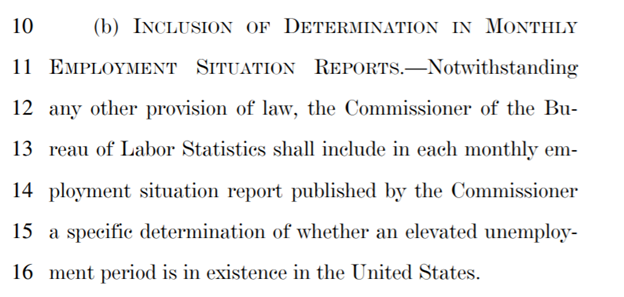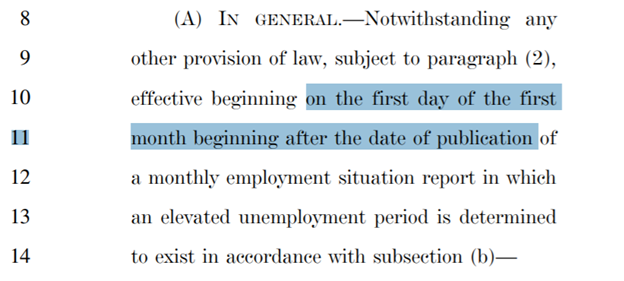THREAD (1/n): With the spate of recent stories and podcasts on automatic stabilizers, I thought it would be worth a thread about a less discussed benefit of automatic stabilizers: as a forcing mechanism to improve administrative capacity and response for an economic crisis.
(2/n) The general benefits of automatic stabilizers: they are faster and more targeted. If the proposals in Recession Ready by @hamiltonproj ( @jayCShambaugh, @Hboushey, @RyanDNunn) had been in place, stimulus would be going into the economy right now, to the hardest hit folks.
(3/n): They also stay on as long as the economy needs it. By tying these programs to economic triggers, we avoid partisan hostage-taking and brinkmanship. The survival of vulnerable families should not be subject to the moods and whims of Mitch McConnell or the Tea Party.
(4/n): Automatic stabilizers improve our administrative capacity during recessions. They provide notice to states and administrative agencies of their responsibilities. With stabilizers in place, agencies would have to develop and maintain the systems to meet their obligations.
(5/n): Example 1 - @SenatorBennet’s Food for Families in Crisis Act requires the max SNAP benefit to increase by 15% the month following the @Claudia_Sahm trigger, which would be published by BLS.
(6/n): The minimum number of days USDA to enact the increase would be 21 days (Feb = shortest month, BLS report comes latest Feb 7). USDA has notice that in a downturn, it& #39;d have to increase benefits, suspend work requirements, and enact other policies required within 21 days.
(8/n): This shit is hard. A big increase in eligibility + benefits means a lot of strain for the agency. But with notice in advance, USDA can plan for the strain. The obligations created by the law are a strong incentive for an agency to get its house in order before the crisis.
(9/n): Here’s an example from the current crisis, the $600 FPUC payment on top of every UI check. The payment was a rough justice attempt to make people whole and get a 100% replacement rate. @RonWyden and @SenatorBennet deserve a ton of credit. It’s helping a lot of folks.
(10/n) But, it has been challenging for agencies to implement. Some agencies don’t have the administrative capacity to simply add a $600 check. See: https://www.nytimes.com/2020/04/17/nyregion/coronavirus-pandemic-unemployment-assistance-ny-delays.html">https://www.nytimes.com/2020/04/1...
(11/n): The plan from Recession Ready by @gchodorowreich, Coglianese has a $50 payment on UI checks during downturns (under EB). It’s part of @SenatorBennet’s UI reform plan. Had it been in place, agencies would have notice that they would have to add $50 checks for folks on EB.
(12/n): Does this make implementing FPUC easy? Not necessarily. Modifying a system designed to add $50 on a limited class of UI checks, to one that adds $600 on every UI check might have administrative hurdles too. But there would be a stronger infrastructure to work from.
(13/n): In a time of crisis, reducing burdens on administrators and legislators, even marginally, can help get aid out the door quicker and better. It would allow them to focus on things like PUA implementation, or processing claims quicker.
(14/n): And in the context of this crisis – simply tying the next round of UI benefits to an economic trigger would provide some predictability to UI state agencies about what they need to administer moving forward.
(15/n): Consider what latest House bill means for a UI agency. They have to implement FPUC until the March 31, 2021 phaseout. But after? Unemployment will still be high, additional benefits will be necessary. An agency can’t plan for what comes after that arbitrary deadline.
(16/n): Implementation is hard without notice. Congress is also restricting what it can do in the next round because UI agencies can’t invest NOW in building the infrastructure ahead of time.
(17/n): If the Beyer/Bennet/Reed plan had been included in the House bill, UI state agencies would have predictability, and could plan. They could plan to reduce the check amounts following the end of the public health emergency. That’s one predictable benchmark.
(18/n): They could also plan to change the benefits as unemployment went down. The check amount decreases when unemployment dips below 7.5%. Unlikely any state goes there soon, but states could start building the infrastructure to administer that decrease right now.
(19/n): The failure to tie the House bill to triggers is not only a failure of strategy-- it’s a policy failure. The longer we avoid the use of economic triggers, the harder it will be for us to implement policy during this economic crisis effectively.
(20/n): In sum, automatic stabilizers would incent the creation of administrative capacity to respond. This is really important. One criticism I heard from Dem opponents of stabilizers in the House was that the Sahm trigger wouldn’t have kicked off till the May BLS report.
(21/n): This is true, but it misses the point. Having a trigger in place would have created the legal and administrative obligations to administrate in a time of crisis. FPUC was distributed earliest by April 6.
(22/n): As a counterfactual: would you rather have FPUC passed at the end of March and rolled out haphazardly and inconsistently over two months? Or have it passed well-in advance, and administered well a month later?
(23/n): Also remember that having a trigger in place doesn’t preclude earlier action. Yes, Claudia’s trigger didn’t show in the BLS data until the May release. But if her direct payment plan had been in place, we’d have an infrastructure to send checks to everyone in America.
(24/n): We could have used that infrastructure to distribute a round of checks prior to the trigger on. The presence of stabilizers doesn’t preclude other measures before, during, or after a crisis.
(25/n): Automatic stabilizers are not a cure-all. They don’t abdicate responsibility during a crisis. There will always be a need for leadership and crisis-appropriate policy response in an economic crisis.
(26/n): But they create a floor from which we can work to respond to a crisis. A stronger structure to work from.
(27/n): Here& #39;s a roundup of the recent great press on the topic. @Neil_Irwin, https://www.nytimes.com/2020/05/15/upshot/virus-economic-response-stabilizers.html.">https://www.nytimes.com/2020/05/1... @crampell, https://www.washingtonpost.com/opinions/washington-shows-just-why-the-country-shouldnt-depend-on-it-for-stimulus/2020/05/11/f4c2650a-9386-11ea-91d7-cf4423d47683_story.html,">https://www.washingtonpost.com/opinions/... @mattyglesias and @ezraklein, https://www.vox.com/the-weeds ,">https://www.vox.com/the-weeds... and NYT, https://www.nytimes.com/2020/05/22/opinion/coronavirus-senate-unemployment.html">https://www.nytimes.com/2020/05/2...

 Read on Twitter
Read on Twitter




